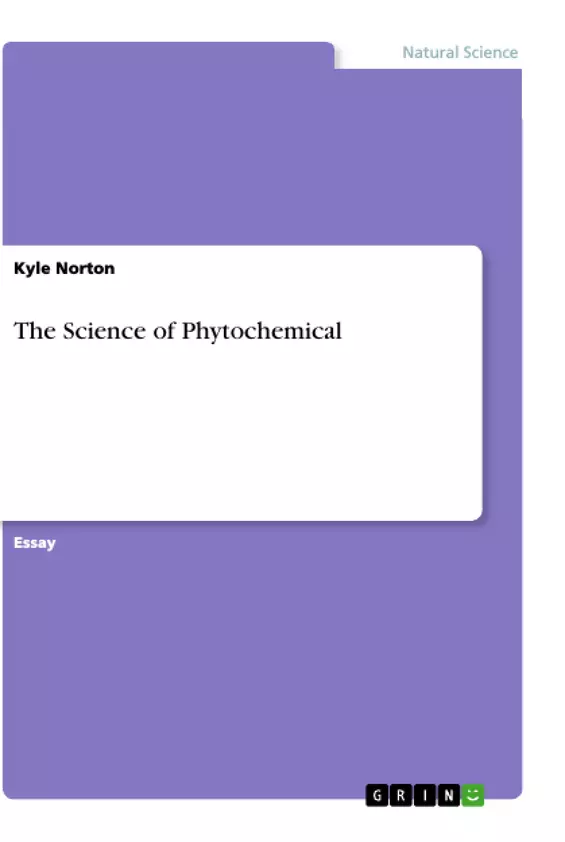Phytochemicals, the nonnutritional parts are natural chemical constituents in plants to protect against diseases and to form color as well as other organoleptic properties. Study of Phytochemicals has emerged as a potential source to find a better treatment or cure some diseases with little or side effects or to create a synthetic equivalence for commercial profits.
Secondary metabolites are chemical compounds produced by bacteria, fungi, particularly in plants involved in the protection of the survival of the organism. Most common secondary metabolites are flavonoids, phenolic and polyphenolic compounds, terpenoids and sulfur-containing compounds. 3,3'-Diindolylmethane or DIM is phytochemicals derived from the digestion of indole-3-carbinol, belongings to the group of Indoles, found abundantly in broccoli, Brussels sprouts, cabbage, and kale, etc. A recent study from the US suggested that DIM may be a potent phytochemical for the prevention or treatment of the adverse effects caused by radiation and chemotherapy in breast cancer patients. Intake of DIM as a form of supplement should be taken with extreme care to prevent overdose toxicity.
Inhaltsverzeichnis (Table of Contents)
- I. Introduction
- II. 3,3'-Diindolylmethane or DIM Health Benefits
- 1. Anti-Inflammation
- 2. Arthritis
- 3. Autoimmune Encephalitis.
- 4. Cancers....
- 5. Chronic Diseases...
- 6. Colitis...
- 7. Delayed-Type Hypersensitivity
- 8. Heart Muscle.
- 9. Hyperglycemia.
- 10. Нурохіа...........
- 11. Hematopoiesis.
- 12. Liver Fibrosis ........
- 13. Liver Protection
- 14. Non-alcoholic steatohepatitis (NASH)
- 15. Osteoporosis...........
- 16. Oxidative Stress
- 17. Radiation Intestinal Injury
- 18. Renal Fibrosis
- 19. Wound Healing.
- III. Summary.
Zielsetzung und Themenschwerpunkte (Objectives and Key Themes)
This text delves into the scientific understanding of 3,3'-Diindolylmethane (DIM), a phytochemical found in cruciferous vegetables, and explores its potential health benefits. It aims to provide a comprehensive overview of DIM's biological activity and its role in various physiological processes.
- The anti-inflammatory properties of DIM
- DIM's role in the prevention and treatment of arthritis
- DIM's impact on various health conditions, including cancers, chronic diseases, and autoimmune disorders
- The potential of DIM as a therapeutic agent
- The importance of further research to fully understand the therapeutic potential of DIM
Zusammenfassung der Kapitel (Chapter Summaries)
- I. Introduction: This chapter provides an overview of phytochemicals, their role in plant protection, and the importance of studying them for their potential medicinal properties. It introduces 3,3'-Diindolylmethane (DIM), its source, and its potential for preventing or treating adverse effects caused by radiation and chemotherapy.
- II. 3,3'-Diindolylmethane or DIM Health Benefits: This section explores the various health benefits of DIM, focusing on its anti-inflammatory properties and its potential role in treating arthritis. It highlights the mechanism of DIM's action and its impact on various aspects of inflammation and immune system function.
Schlüsselwörter (Keywords)
The text revolves around the phytochemical 3,3'-Diindolylmethane (DIM), its anti-inflammatory properties, and its potential therapeutic applications in various health conditions, particularly arthritis. Key concepts include phytochemicals, indole-3-carbinol, inflammation, oxidative stress, osteoclastogenesis, RANKL, and therapeutic potential.
- Citar trabajo
- Kyle Norton (Autor), 2019, The Science of Phytochemical, Múnich, GRIN Verlag, https://www.grin.com/document/501353



